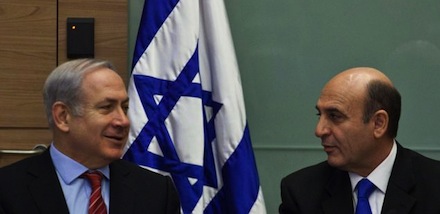
Electoral geography fans, take note: New York could be the deciding constituency in Sunday’s Dominican presidential vote:
Thanks to a law passed in 1997, expatriate Dominicans no longer have to fly to the country’s capital of Santo Domingo to vote in presidential elections. Dominicans voted locally for the first time in 2004 and tens of thousands of Dominican expatriates registered to vote for the 2012 contest – making New York one of the island nation’s most important constituencies in the neck-and-neck election scheduled for May 20….
On Feb. 5, the Board reported that it had registered 328,649 Dominicans living abroad in countries such as the U.S., Canada, Spain and Italy—about 5 percent of the total pool of 6.5 million registered voters, according to the JCE.
The number of Dominican residents of New York City registered to vote has almost doubled over the last four years, from 55,989 in 2008 to over 103,000 today….
About 20 percent of the Dominican Republic’s nearly 10 million citizens currently live abroad. The majority, over 1.4 million Dominicans, live in the U.S., according to the 2010 U.S. Census.
Almost half of them, approximately 674,000, live in New York State. New Jersey, Massachusetts, Florida and Pennsylvania also have high Dominican populations.
Voters in New York help make the U.S.-based voting bloc larger than 27 of 31 provinces within the Dominican Republic.
Indeed, both major presidential candidates visited New York — as well as Miami and New Jersey — over Holy Week and Easter, when campaigning traditionally pauses in the Dominican Republic.
Sunday’s election will see a tight race between Danilo Medina, the candidate of the centrist Partido de la Liberación Dominicana (the Dominican Liberation Party) and Hipólito Mejía, former president from 2000 to 2004 and candidate of the center-left Partido Revolucionario Dominicano (the Dominican Revolutionary Party). Outgoing PLD president Leonel Fernández defeated Mejía in 2004, but is term-limited by the Dominican constitution to just two four-year terms. Mejía, in turn, defeated Medina in the 2000 race.
Although many Dominican business interests and voters looking for change support Mejía, other voters are wary of Mejía’s first term in the early 2000s, which coincided with an economic crisis that improved after Fernández’s election in 2004.
Within Dominican politics, both parties are seen as fairly leftist, although the PLD is seen has having moved to a more centrist position (although it was once further left than the PRD). The third major party, the Partido Reformista Social Cristiano (Social Christian Reformist Party) was once the major center-right of the Dominican Republic, and was the party of longtime former president Joaquín Balaguer, who governed the Dominican Republic from 1960 to 1962, from 1966 to 1978 and again from 1986 to 1996. The PRSC is not fielding a candidate, however, in this election, and its supporters are backing both Medina and Mejía.
The Santo Domingo-based Hoy shows Medina with a slight 54% lead over Mejía’s 44%, as both campaigns launched their final swings this week.
![]()

